

Home
About Us
Allotments
Garden Equipment
Seed Suppliers
Manure Problems
Children's Pages
GLA Blog
Weather Blog
School Veg Patch
Useful Links
Growing sweet peas
Every year we grow lots of sweet peas on our allotment. Not only do they produce a beautiful display but they also provide us with cut flowers for the whole of summer. I mainly choose varieties if sweet peas with good perfume as to b honest it is the perfume that draws me to the flowers. Having said all that, if I really like the colour, I do often have a variety in the mix that doesn't have a strong perfume. The perfume from the other flowers often hides the fact that one individual is weak in the scent department.
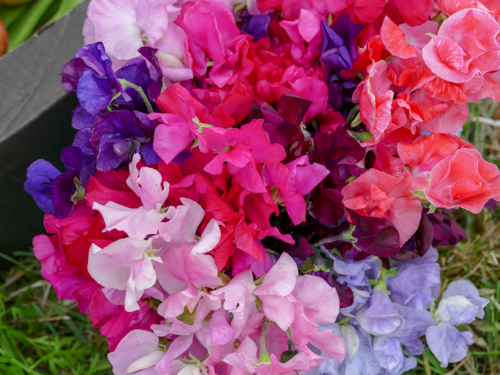
Many gardeners will sow sweet pea seeds in autumn but as with many other things we are late starters. We sow our sweet peas in March. It is also recommended that the seeds are sown in deep pots or root trainers to allow space for root growth but we sow ours in modules. We sow three seeds to a cell as we don't have enough room to sow the seeds individually.
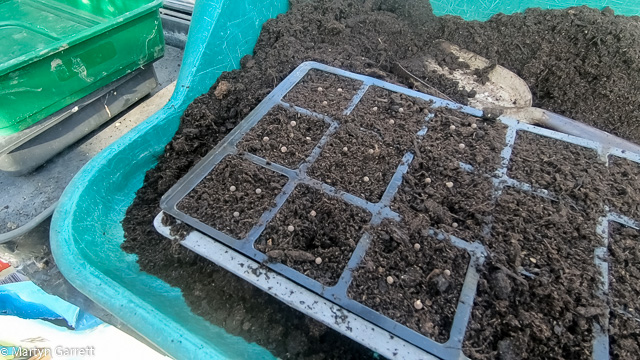
The seeds have usually germinated within a couple of weeks. We cover the trays with a plastic dome as mice like to dig up the seeds for dinner.
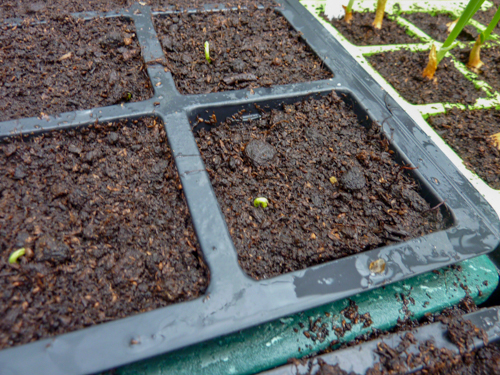
We usually obtain quite good germination and all the seeds that have germinated are allowed to grow on undisturbed.
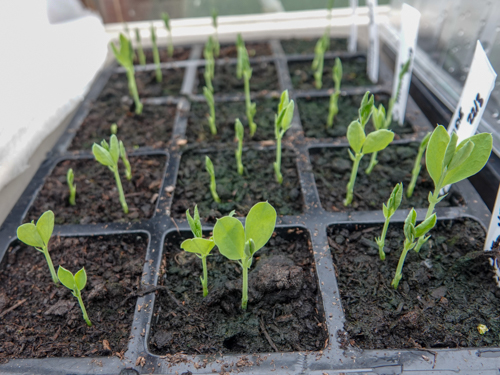
If we were growing flowers for show the seedlings would be thinned out one to a pot but we are just aiming for bunches of flowers to have in the house.
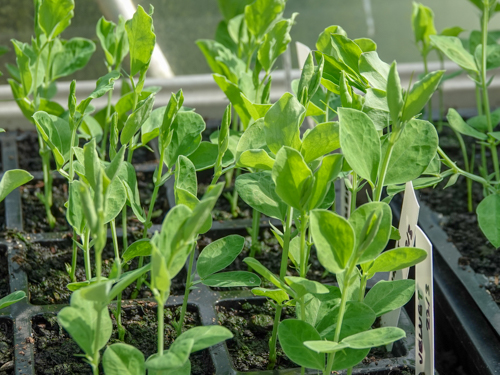
Once the young plants start to grow, and are at the stage shown above., the next job is to snip out the growing tips to make the plant bush out. 'Serious' growers wouldn't do this as they want the plantlets to produce one single long stem whereas we want the plant to produce lots of flowers. Those who are trying to produce show specimens would also remove all the plant's tendrils so that all the plants energies go into producing long stemmed flowers. If tendrils are removed the plants are grown as cordons and tied into bamboo canes.
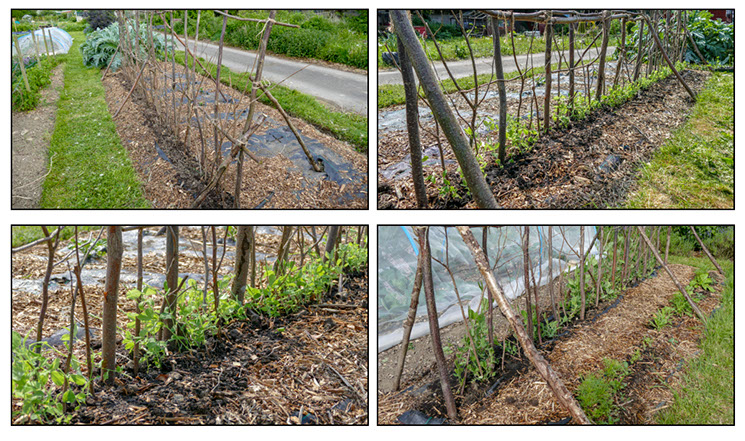
Before we plant the sweet peas we prepare a trench which is them filled with compost; our clay soil isn't the most hospitable of growing medium for young plants. We plant each group of seedlings in a module together as we would if iit were a single plant.
We have a couple of hazel bushes that are regularly coppiced and provide us with a supply of hazel piles and twigs with which we make a support frame. As sweet peas cling on with tendrils they can't climb up canes or poles and so we intertwine the hazel pole with twiggy pieces of hazel which the tendrils can grasp.
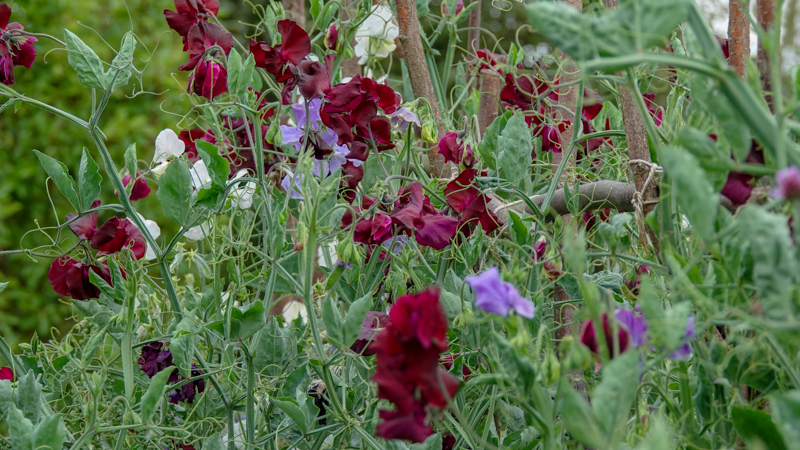
Sweet peas are very thirsty plants and so we make sure that throughout the growing season we keep them well watered. If the plants become too dry they will succumb to mildew.
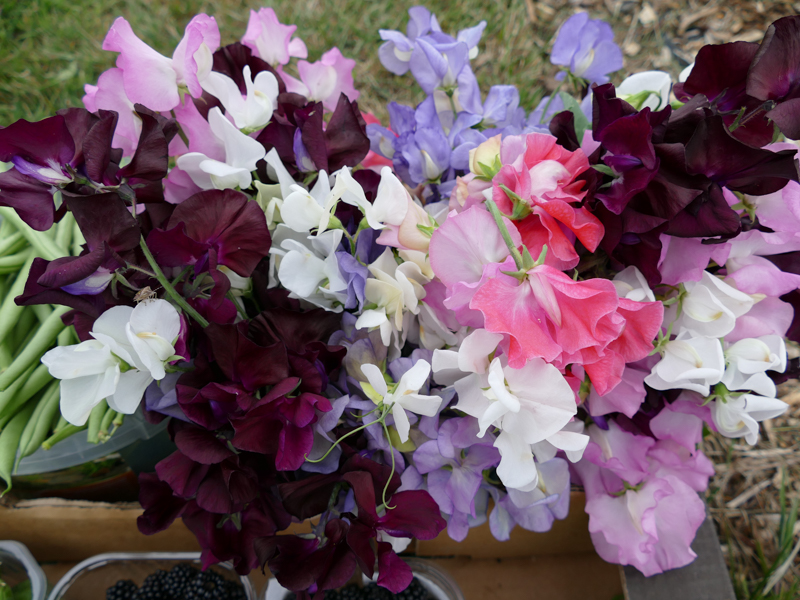
It's important to keep cutting the flowers or failing that dead head the flowers before they have the chance to set seed. Once the plants are allowed to set seeds they will stop flowering. At times we have sweet peas in most rooms of the house where they act as natural air fresheners.
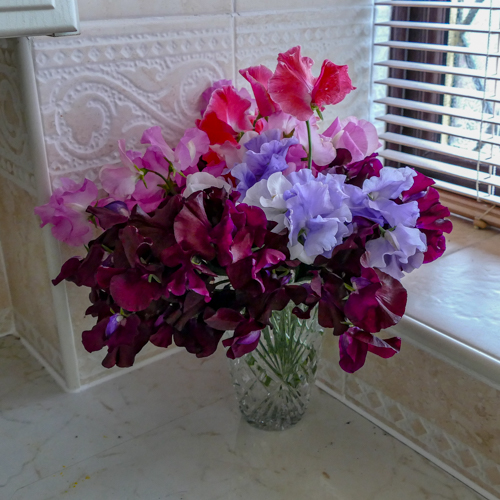
We find that gradually over the growing season flower stems become shorter but we have, in a favourable growing season, picked a few flowers into October.
Our Plot at Green Lane Allotments Blog | A Gardener's Weather Diary | School Vegetable Patch Website
© Our Plot on Green Lane Allotments - Please email me if you wish to use any of this site's content